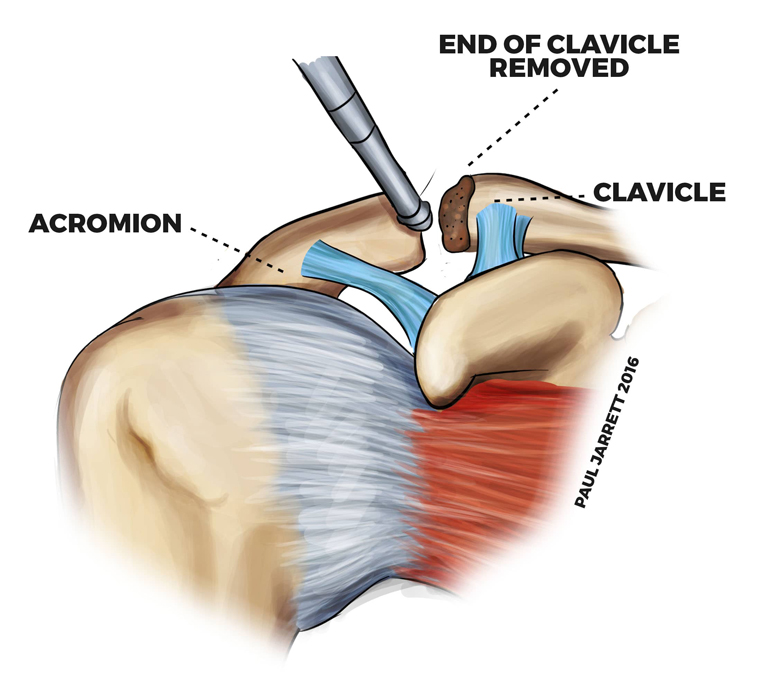
Acromioclavicular Joint Arthritis
The joint between the end of the clavicle and the acromion (Acromioclavicular Joint) moves and rotates with shoulder function.
If it becomes inflamed or arthritic, it can produce pain and reduced shoulder function. The pain is typically felt directly over the acromioclavicular joint, at the top part of the shoulder, which worsens when using your shoulder, often when lying on your shoulder and when crossing your upper limb across your chest. The symptoms are often recurring or persistent.
How is acromioclavicular impingement / bursitis treated?
Restricting your activity and the use of painkillers for a period of time may be all that is required to let the condition settle, although it is likely that matters will recur. Should symptoms worsen or become persistent, the next form of treatment is a steroid (cortisone) injection into the acromioclavicular joint. The steroid injection works by reducing the inflammation in the joint. At times physiotherapy will have a role to play in resolving symptoms.
Should the above fail to improve your symptoms, then surgical removal of the joint (acromioclavicular joint resection) is an excellent option to improve your shoulder. Approximately 5 to 7 mm of bone is removed from the outer edge of the clavicle, leaving the important stabilising ligaments intact and any rough areas of the acromion are removed.
The operation is carried out under general anaesthetic and performed arthroscopically using three to four small arthroscopic incisions. It is common to perform a subacromial decompression at the same time.
Acromioclavicular joint resection – Post-Operative Care
It is usual to spend one night in hospital following an acromioclavicular joint resection operation. No structures are repaired during this type of surgery, so you can rehabilitate and use your shoulder as much as comfort allows. A sling can be worn for comfort but is not essential. Mr Jarrett encourages you to rapidly reduce the use of a sling over a few days. Exercises are commenced immediately following the procedure.
Wound dressings will be changed the day following your surgery, and all dressings can be removed 10 days postoperatively by yourself. You can then wash your skin including your wound as normal and moisturise your skin once or twice daily. It is unlikely you will have any sutures present but if any sutures used are absorbable. When you wash your shoulder over the next few days, they will fall out. There is a video on our website that may find helpful, with details on how to remove your dressings and what to expect after surgery. Full recovery will take many months but most daily activities can usually be undertaken after 6 weeks, and by 3 months the shoulder should be sufficiently recovered to allow a majority of activities.
The risks of this surgery include infection, prolonged stiffness, acromial fracture (rare), nerve and blood vessel injury (rare) and a failure to resolve symptoms.
